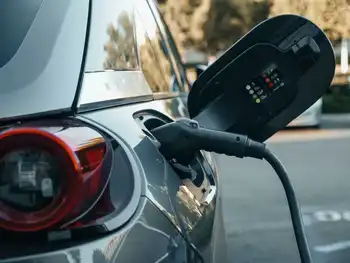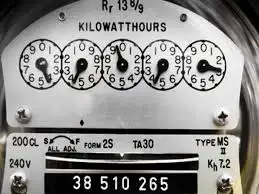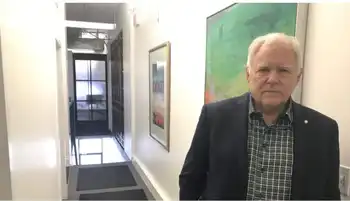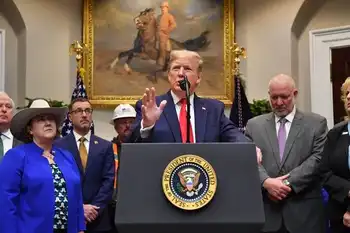Green energy firms upbeat despite economy
By Ottawa Sun
Substation Relay Protection Training
Our customized live online or in‑person group training can be delivered to your staff at your location.

- Live Online
- 12 hours Instructor-led
- Group Training Available
“We’re in the middle of the largest construction build in the history of our company,” said Kent Brown, chief financial officer of Canadian Hydro Developers Inc.
The Calgary-based company currently has seven wind plants, 12 hydroelectric plants and a biomass plant, with several more projects in the pipeline.
“We’re in the process of doubling the size of our company within the space of a year. Anything you can think of, it’s doubling,” said Brown, whose firm employs 140 people across Canada.
The silver lining of the downturn, at least for the green technology sector, is that it will likely prompt governments in both the United States and Canada to spend big bucks on infrastructure.
President-Elect Barack Obama recently laid out details of a proposed [US]$775-billion economic stimulus package, which would include a doubling of U.S. alternative energy production over three years.
And Prime Minister Stephen Harper said the budget on January 27 will include “extraordinary measures,” which could also entail big infrastructure spending.
“You really hit a home run if governments are looking for this on all fronts. It’s electricity, it’s infrastructure, it’s jobs, it’s investment and it’s green,” said Brown.
But others are not so upbeat.
Venture capital investments in Canadian clean technology companies dropped from $244 million in the fourth quarter of 2007 to $25 million in the fourth quarter of 2008, according to data from San Francisco-based Cleantech Group LLC.
“Capital flows are becoming more scarce and investors are becoming more conservative,” said Brian Fan, senior director of research for the firm, which promotes environmentally friendly investing.
Vancouver-based Westport Innovations Inc., whose technology allows medium and heavy-duty vehicles to run on clean-burning fuels, has not been affected much by the economic downturn yet, chief financial officer Elaine Wong says.
“A lot of our products today are sold to municipalities, governments and so we’re not seeing any slowdown in demand for that,” she said.
“If anything, with the fiscal stimulus packages that President-Elect Obama and even the guys in Ottawa have been talking about, we’re optimistic.”
There has been a big push south of the border, spearheaded by former oilman T. Boone Pickens, to reduce AmericaÂ’s dependence on foreign oil by adopting natural gas as a transportation fuel.
Pickens is WestportÂ’s biggest shareholder with a 12 per cent stake.
Plummeting oil prices have taken the shine off the alternative energy sector, with the price of a barrel of crude falling from [US]$147 per barrel to under [US]$40 in a matter of months.
But Wong sees that trend as short lived, which will restore the attractiveness of alternative sources down the road.
“This crisis is going to end. And when it ends, we suspect that oil prices will spike back up,” she said.
Customers tend to opt for environmentally friendly energy only if it comes at a similar or lower price than traditional types, said Rod Bryden, CEO of private Ottawa-based firm Plasco Energy Group Inc.
Plasco converts solid municipal, industrial and commercial waste into energy. Since waste removal is something municipalities have to pay for no matter what, they have taken well to PlascoÂ’s offering.
“The level of interest from communities in getting optimum value from their waste is at least as high, perhaps somewhat higher than it was prior to the September financial markets crash,” Bryden said.
Plasco is set to build commercial-scale facilities in Ottawa and in AlbertaÂ’s Red Deer County.
A prospective investor in Toronto-based Morgan Solar Inc. told the start-up’s business development director Nicolas Morgan his company “might even be a safer bet for his money than a bank.”
“I actually feel a little bad saying this, but the economic downturn hasn’t really affected us at all,” said Morgan, who is working with his business-savvy father and “engineering prodigy” brother on cheaper, more efficient solar panels.
“We’re not having people back out. Everyone who was interested is still interested,” said Morgan.
Morgan Solar is currently a “small shop” with a handful of engineers and business staff, but the firm plans on hiring between 40 and 50 people by the end of the year.
“Economic uncertainty is an opportunity for really good value propositions and really well thought out business plans,” said Morgan, who said the clean-energy angle is not the only reason his business has been successful so far.
“People don’t invest in industries. They invest in specific projects, specific companies and specific people.”











